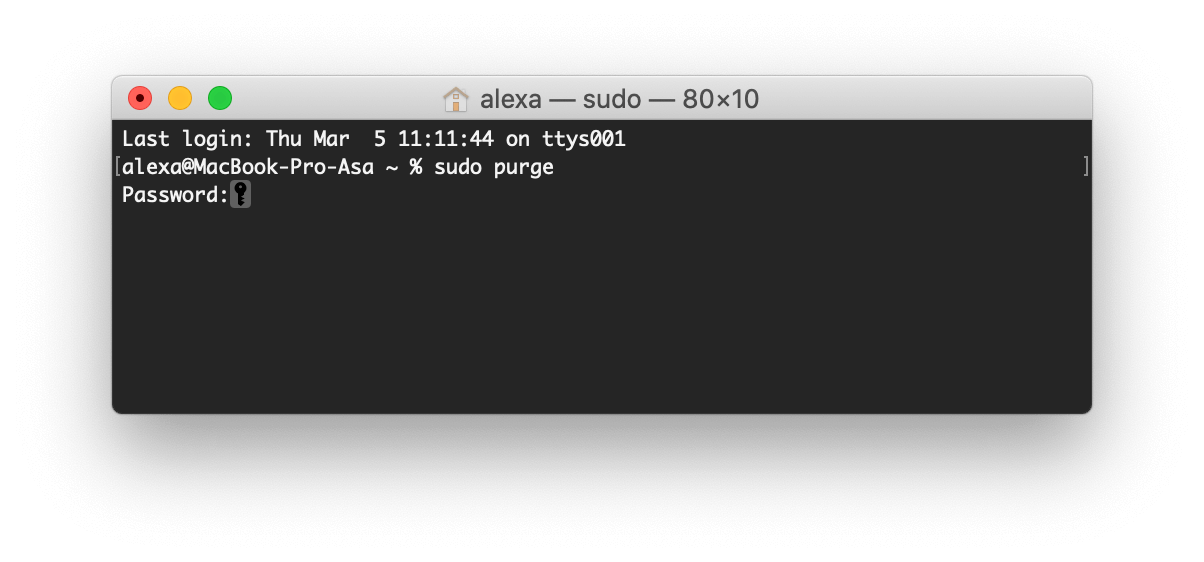

- #Purging in terminal for mac mac os#
- #Purging in terminal for mac install#
- #Purging in terminal for mac manual#
- #Purging in terminal for mac full#
- #Purging in terminal for mac mac#
If you are a beginner, then let them not scare you, in fact, everything is simple, you just need to get used to it a little.
#Purging in terminal for mac mac#
These are the most popular Command line commands Mac which are used most often.

#Purging in terminal for mac manual#
#Purging in terminal for mac full#
The full history is stored in the file ~ /. If you continue pressing the up key ↑, you will go through the history of the commands you have executed.
#Purging in terminal for mac mac os#
If you press the up key ↑ in the Mac OS Command line, the last command you entered will be displayed.This function works similarly to autocomplete commands. Use autocomplete also for names and paths to files and directories.If there are several commands that start with the characters you have entered, then pressing Tab twice will display all these commands as a hint. For example, you can enter only the first letters of a command and press the Tab, after which the missing letters of the command will be added automatically. AI: Artificial Intelligence or Automated Idiocy? Please mark Yes/No as to whether a Reply answers your question. Tools> Protect Document to check the box for that purpose. That's easily accomplished in Word 2016 by going to That's the purposeįor most requirements it's sufficient to have personal information removed from certain documents. The simple fact is that anyone in such an environment would have the expertise available, but the matter would start by not electronically transmitting copies of the actual Word document in the first place.
#Purging in terminal for mac install#
The average user cannot install an operating system or software without providing a certain amount of information, so phony user data, registration information & other methods of deception would be necessary, butĮven that wouldn't be enough.
This is what John meant by having to create a "clean computer", but unless you're in a very sophisticated, highly technical espionageĮnvironment it's literally impossible to do. Metadata is information about the document & the user, most of which typically is appended by the operating system. It is visible & editable when the document is displayed Tracked changes are integral content added to a document by those who edit the document. That seems to be where this conversation went off the rails. Tracked changes, though, are not metadata. As John indicated in his opening statement, resolving tracked changes effectively removes them from the document.


 0 kommentar(er)
0 kommentar(er)
